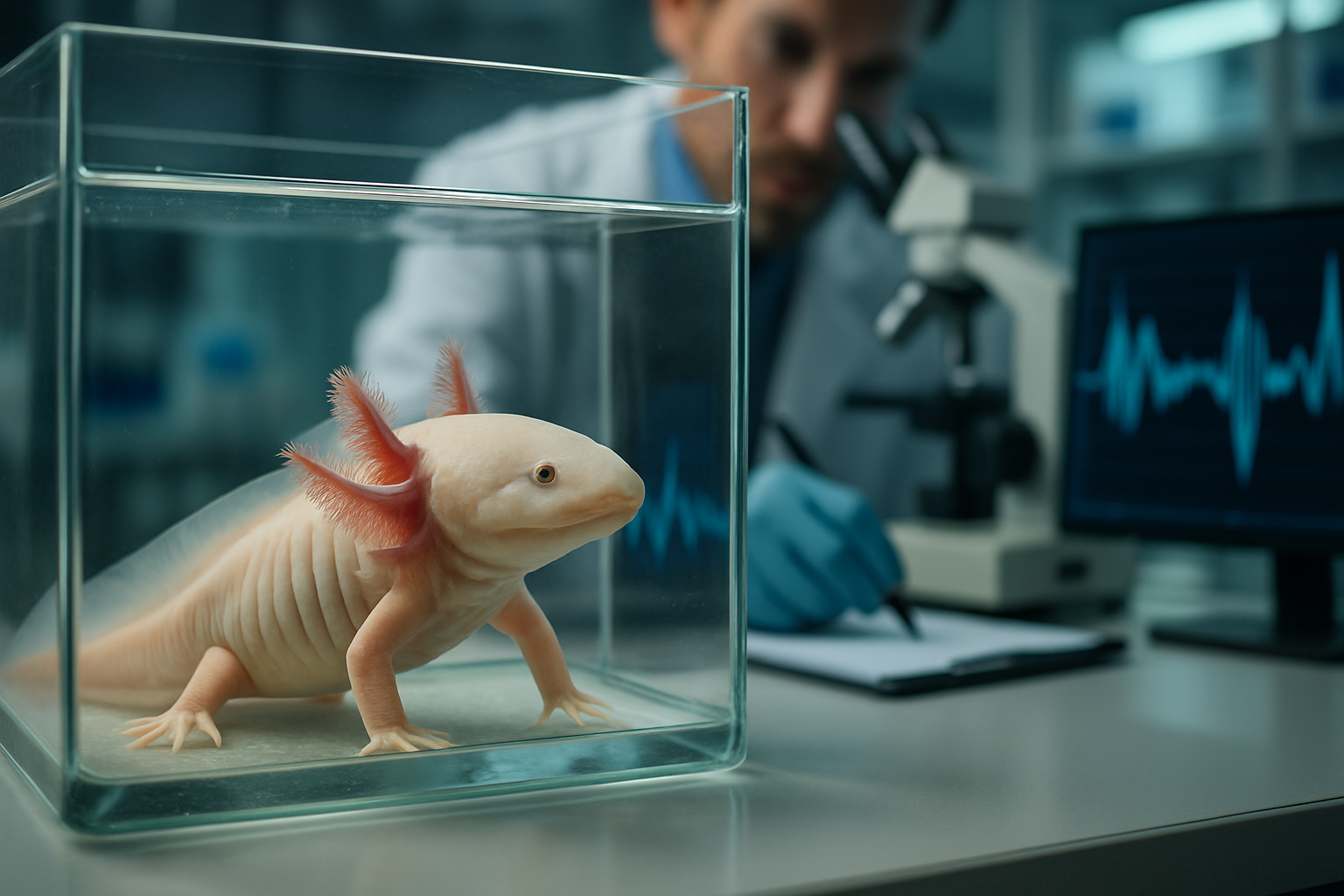Decoding the Enigmatic World of Axolotl Regeneration
In the realm of extraordinary creatures, the axolotl stands out as a marvel of nature. This captivating amphibian, native to Mexico, has captured the imagination of scientists and animal enthusiasts alike with its remarkable ability to regenerate lost body parts. From limbs to organs, the axolotl's regenerative powers have long been a subject of fascination and intense scientific study.

The Fascinating History of Axolotl Research
The study of axolotl regeneration dates back to the late 19th century when scientists first documented their remarkable abilities. Early researchers were astounded by the axolotl’s capacity to regrow entire limbs, complete with bones, muscles, and nerves. This discovery sparked a wave of scientific interest that has persisted for over a century.
In the 1960s, researchers began to unravel the cellular mechanisms behind axolotl regeneration. They identified the formation of a blastema, a mass of dedifferentiated cells that forms at the site of injury and gives rise to new tissues. This finding laid the groundwork for modern regenerative medicine research.
The Cellular Ballet of Regeneration
At the heart of the axolotl’s regenerative prowess lies a complex interplay of cellular processes. When an axolotl loses a limb, the wound quickly closes, and within hours, cells near the injury site begin to change. These cells dedifferentiate, reverting to a stem cell-like state, and form the blastema.
The blastema acts as a command center, orchestrating the regeneration process. It releases chemical signals that guide the formation of new tissues, ensuring that bones, muscles, and nerves grow in the correct proportions and locations. This intricate cellular choreography results in the formation of a fully functional new limb, often indistinguishable from the original.
Unraveling the Genetic Secrets
Recent advances in genetic sequencing have provided researchers with unprecedented insights into the axolotl’s regenerative capabilities. In 2018, scientists successfully sequenced the axolotl genome, revealing it to be the largest animal genome ever sequenced - ten times larger than the human genome.
This genetic blueprint has unveiled a treasure trove of information about the genes and regulatory elements involved in regeneration. Researchers have identified several key genes that are activated during the regeneration process, including those responsible for cell proliferation, tissue patterning, and immune response regulation.
Implications for Human Medicine
The axolotl’s regenerative abilities have far-reaching implications for human medicine. While humans possess limited regenerative capabilities, such as liver regeneration and skin healing, we cannot regrow entire limbs or organs. Understanding the axolotl’s regenerative mechanisms could potentially unlock new therapies for a wide range of medical conditions.
Scientists are exploring how axolotl regeneration research could benefit areas such as:
-
Wound healing: Improving the speed and quality of wound closure and tissue repair.
-
Organ regeneration: Developing techniques to regenerate damaged organs, potentially reducing the need for transplants.
-
Spinal cord injuries: Finding ways to regenerate damaged neural tissues to restore function in paralyzed individuals.
-
Limb regeneration: While still in the realm of science fiction for humans, understanding axolotl limb regeneration could lead to improved prosthetics and treatments for amputees.
Challenges in Axolotl Conservation
Despite their importance to scientific research, axolotls face significant challenges in their natural habitat. The species is critically endangered in the wild, with only a small population remaining in the canals of Xochimilco, Mexico City. Habitat destruction, pollution, and the introduction of invasive species have pushed the axolotl to the brink of extinction in its native range.
Conservation efforts are underway to protect the remaining wild axolotls and their habitat. These include habitat restoration projects, captive breeding programs, and public awareness campaigns. The scientific community has also established robust captive populations for research purposes, ensuring that these remarkable creatures continue to contribute to our understanding of regeneration.
The Future of Axolotl Research
As technology advances, so does our ability to unlock the secrets of axolotl regeneration. Cutting-edge techniques such as single-cell RNA sequencing and CRISPR gene editing are providing researchers with unprecedented insights into the molecular mechanisms of regeneration.
One exciting area of research involves comparing the regenerative abilities of axolotls with those of other salamander species. Some salamanders, like the newt, can regenerate throughout their lives, while others lose this ability as they age. Understanding these differences could shed light on how regenerative capabilities evolve and potentially lead to new approaches for stimulating regeneration in humans.
Ethical Considerations in Axolotl Research
As with any animal research, the study of axolotls raises important ethical considerations. Scientists must balance the potential benefits of regeneration research with the welfare of the animals involved. Many institutions have established strict guidelines for the humane treatment of axolotls in laboratory settings, ensuring that these creatures are treated with respect and care.
Additionally, the conservation status of wild axolotls has prompted discussions about the responsible use of captive-bred individuals for research. Efforts are being made to develop sustainable breeding programs that support both scientific research and conservation goals.
Conclusion: A Window into Nature’s Marvels
The axolotl’s extraordinary regenerative abilities continue to captivate scientists and animal enthusiasts alike. As we delve deeper into the molecular and genetic mechanisms behind their remarkable powers, we open new doors to understanding the fundamental principles of tissue regeneration and wound healing.
While the road from axolotl research to human regenerative therapies is long and complex, each discovery brings us closer to unlocking the potential of regenerative medicine. As we continue to study these fascinating creatures, we not only gain insights into the possibilities of human healing but also develop a deeper appreciation for the incredible diversity and resilience of life on our planet.
The story of axolotl regeneration serves as a powerful reminder of the wonders that still exist in the natural world and the importance of preserving and studying Earth’s unique and extraordinary species. As we face the challenges of the future, the humble axolotl may hold the key to revolutionary advancements in medicine and our understanding of life itself.





